I’ve tried watching DOTA 2 online. I’ve tried playing it. It just wasn’t for me. Going to a big pro event changed that.
Walking into the Red Bull Battlegrounds DOTA 2 event at The Warfield in San Francisco (it’s a venue, not a, er, field of war) was kinda surreal. For one, I’d seen countless concerts there, some of them put on by my absolute favourite bands on Earth. “Wow,” I thought to myself, wide-eyed among the red-and-blue-lit black, “maybe these ‘video game’ things are gonna catch on after all.” For two, they’d made the place look like a cathedral in the players’ honour. Like this:
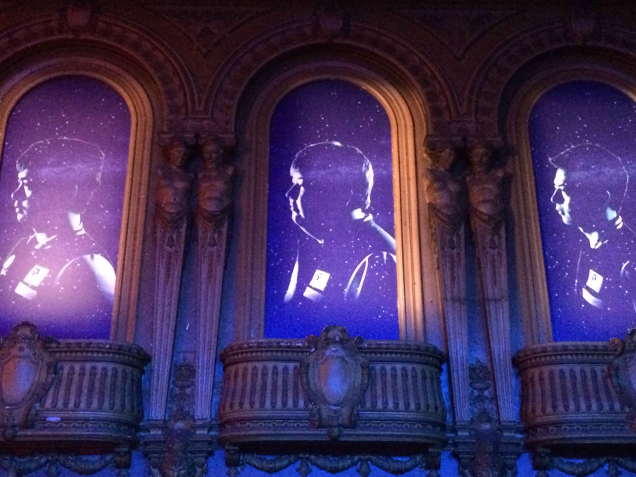
Glory be, glory be.
It was kind of odd, though, given that DOTA 2 is a sport grown from a very grassroots appeal. One of the members of the team that went on to win the whole thing, Artour “Arteezy” Babaev of Team Secret, explained to me that he finds it weird that he’s expected — on some level — to be a role model now. “We’re all just nerds at the end of the day,” he said. “We’re no different from the fans. We’re just playing a game. We’re just good enough to get recognised and famous for it.” Which is oddly reductive (the same could be said of all sports ever), but you get the idea.
Still, the event was relaxed despite its size, and Dota pros mingled with fans before the festivities kicked off. That was nice, and it drove home one of the big appeals of eSports like DOTA 2: these players are both larger than life and down to earth. Their skills leave people in awe (and they get cool cathedral window inserts printed in their honour), but they also seem like somebody you could run into on some random server, maybe share a little friendly trash talk with. “Thanks for being so cool about this,” I heard someone say, almost incredulous, after a lengthy chat with one of their favourite players.
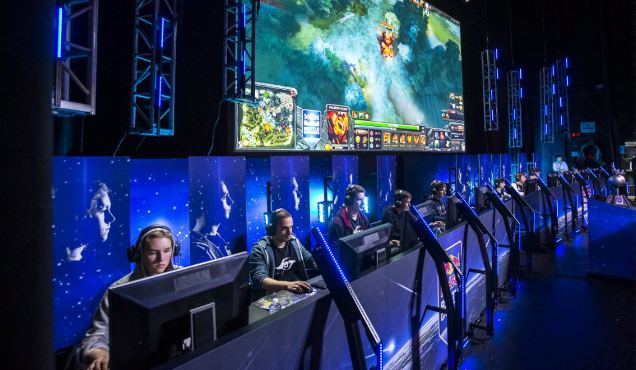
It was, however, the experience of watching Dota 2 — this absurdly granular game I only understand in broad strokes — surrounded by fans who knew its every in and out that really sold me. Here is a list of things they cheered for:
- When teams were making picks/bans, aka the part at the start of a round where each team alternates choosing heroes they want to use and heroes the other team can’t. When old favourites or unexpected choices (like Winter Wyvern, never before used in a pro match the shoutcasters had called) took center stage, the crowd hooted and hollered like they’d just be freed from a monstrous thousand-year tyranny and also someone put a basketball in a hoop.
- When a team drew first blood, aka scored the first kill of another player in a round.
- When heroes got killed.
- When heroes looked like they were going to get killed, but ran away at the last second.
- When heroes looked like they were going to get killed, but teleported away at the last second.
- When someone tried to do either of those last two things, but failed.
- When there was an especially smart item purchase.
- When a tower (a key defensive structure) went down.
- When a tower almost went down but didn’t.
- When a team started getting kinda close to entering another team’s base.
- When a team entered the other team’s base, but then left because they’d taken too much damage to finish the job.
- When they finished the job, and the winning team’s section of the stage glowed triumphantly, like it was pregnant or, more likely, covered in lights.
- When both teams converged, all sudden fury and flurries of magic, sparking like a fireworks show gone haywire. These moments, which often came after lengthy periods of calm, were nuts. Shoutcasters would go from quietly observing team strategies to yelling at the top of their lungs like auctioneers who’d just done tongue-steroids. “NOW IT’S TEAM IG PUSHING FORWARD AND AN ULTIMATE ANOTHER ONE DOWN THE SUNJUSTEXPLODEDBUTHTISISSIGNIFICANTLYMOREEXCITING.” The crowd’s roars would grew louder and louder as the speed of the shoutcasters’ voices increased. It was hard not to get caught up in it.
The bottom line? Fans cheered a lot and, more importantly, at a lot of different things. They were educated, interested, and helped me stay tuned in when I started to zone out.
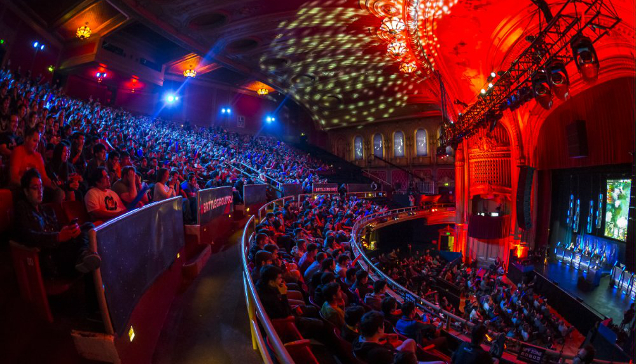
Finally, I realised why so many people spend so much time watching other people play DOTA 2: it can be really dang exciting. That might sound like a no-brainer, but let me explain. For me, there were two key components to my DOTA-derived enthrallment: 1) the strangely mesmerising pace of each round and 2) straining my brain to learn and even predict team’s strategies, on the fly.
I wasn’t expecting to be to taken by the first part, but by the end of the day I felt like I could watch people play the game for, well, another entire day. Sure, DOTA can be slow-moving, uneventful, and convoluted at times, but that makes the moments when Shit Goes Down beyond thrilling. When teams crash into each other like angry waves and body counts skyrocket on both sides and the shoutcasters and crowd go crazy and there are riots in small Eastern European nations no one’s heard of, it’s goddamn electrifying. The contrast between that and t the energy of the rest of the game is like night and day. It’s the explosive culmination to obsessive strategising. That is the reason why — contrary to what I used to think — DOTA 2 makes for a damn fun spectator sport.
(That said, I didn’t love the way rounds would often take on this avalanche-like quality, which is to say Secret or IG would take an early lead, forcing the other team to go on the defensive for most of the match, with little chance of turning things around. It was especially bad during later portions of rounds, when it was obvious who’d win but they had to slowly fight their way into their opponents’ base. It was attrition, and not fun attrition. Maybe that was just particular to how those two teams matched up, though.)
The second thing — learning as I watched — made the whole spectacle unexpectedly rewarding. As I picked up more and more knowledge, got acclimated, and became able to occasionally predict what would happen,I felt damn good about myself. “I’m so smart,” I told all the mind-reading mutants in the audience. “Not smart enough to read minds, but you know, doing well by my standards.”
It really was gratifying, even if I was a relative neophyte compared to most people there. But that’s the nice thing about DOTA 2: everyone’s a neophyte on some level. There’s so much to learn, so much to unpack, that I feel like each new match will likely present my mousy little brain with new labyrinths to run through.
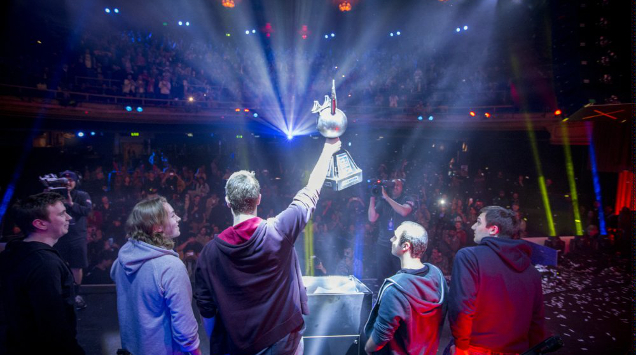
At the end of it all, things came full circle. I’d begun the day talking to these pros who felt like they were Just Normal Dudes, and their performance made me, Just A Normal Dude, feel like I wanted to play this game. Me, someone who’s often like a turtle when it comes to human interaction (“YOU CAN’T MAKE ME DO IT. THIS SHELL IS LITERALLY GRAFTED TO MY SPINE”) and intimidated by all the complexity. But the Red Bull Battlegrounds made it all seem like so much fun, and it provided a strangely accessible window into the game despite extremely high level play and a fair amount of jargon. I saw DOTA 2 at its best, and I realised I wanted to be part of it.
Now I just have to find the time to learn how to play. I’ll, uh, get back to you on that part.
Pictures: Red Bull
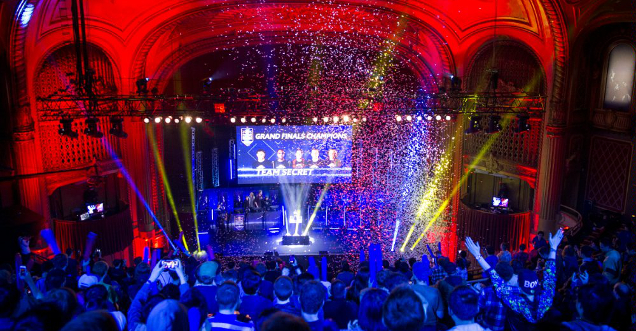
Comments
5 responses to “I Didn’t ‘Get’ DOTA 2 Until I Watched It Live”
100 hours until you can correctly say you know how to play. 1,000 hours until you get good.
I wish I was joking.
I have 1,200 hours and I’m still terrible.
I think I have around 1k in Dota 2, but would have several thousand in Dota 1 (6 months unemployed doing nothing but bongs and dota… god life used to be great).
500 hours and I’m still not doing ranked. I know I haven’t lost a ranked match yet but I’m not yet confident enough to go into a game and not have the chance of being a liability that gets 0/10.
Ranked is pretty much same as normal play. I’ve hovered around 2k MMR for a while. Playing ranked and normal matches aren’t any different from each other. I’ve found that non-ranked games tend to have the better team plays.